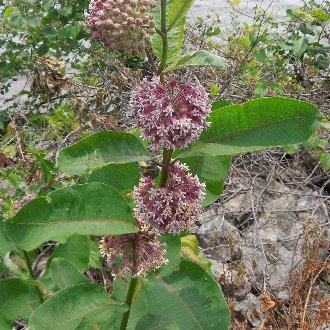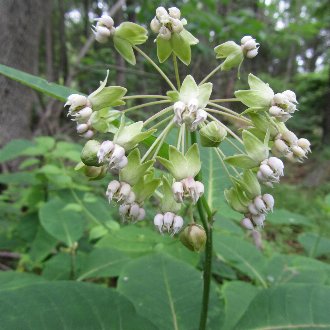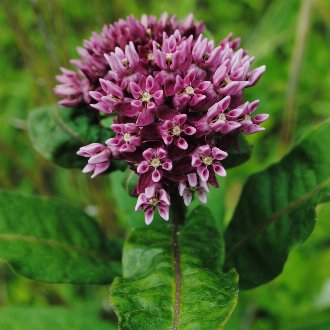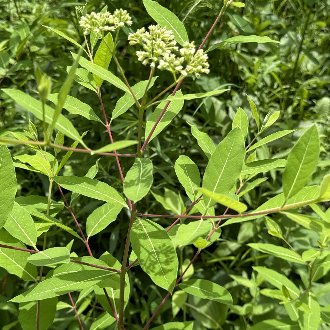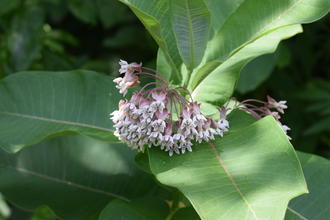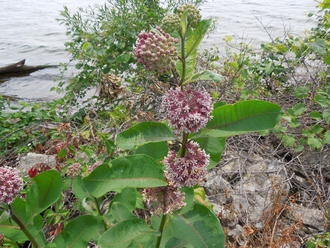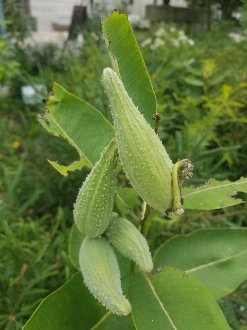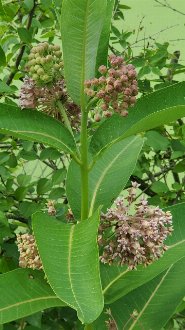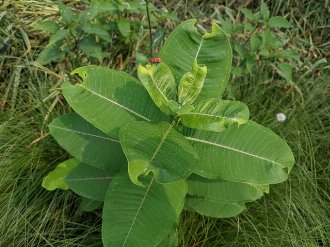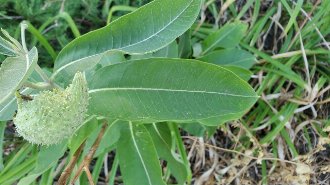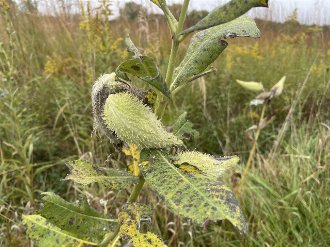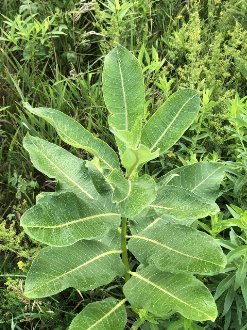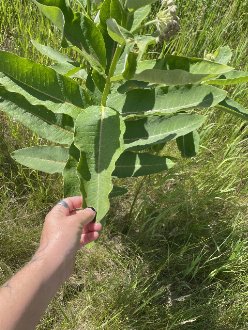Common Milkweed (Asclepias syriaca L.)
↑Summary
A sun-loving rhizomatous perennial native to northeastern North America, best known for being a preferred host of the Monarch butterfly.
↑Range - Expand
| Legend | Color |
| Native | |
| Native or Not Present | |
| Introduced or Not Present | |
| Native or Introduced | |
| Native or Expanded | |
| Native or Expanded or Not Present |
This map is based on our research. We have checked its accuracy to Level 3 ecoregions. Although this plant occurs somewhere in each of these regions, it may only occur in a small part of some or all of them.
There is considerable disagreement about the native range of this species. The ERA marked this native to the Cascades and Williamette valley, probably from USDA data that marked it as native there. Many popular sources, as well as (Wyatt et al 1993) say it is introduced in Oregon. BONAP shows it as native but uncommon and scattered in Georgia, whereas this pamphlet (PDF) from the UGA Botanic garden says it is not native to Georgia. We consider populations in Montana and Oregon introduced, the one population in Texas expanded as it is closer to its native range. This species however does not seem to be expanding its range appreciably south, in spite of the fact that it is widely planted in gardens, and has wind-dispersed seeds and high seed production. It is probably limited by climate or other factors, and/or cannot compete with other more southerly plants.
↑Similar Plants
↑Habitat
Fairly general in its habitat preferences, and tolerates a range of conditions, but prefers full sun. Tolerates both sandy and clay soils, including compacted soils.
Common along roadsides and railroads, field margins, in abandoned fields, vacant lots, industrial sites, and other open, disturbed sites. Among less disturbed wild habitats, found on prairies, shale barrens, and sand dunes of freshwater lakes.
This species has historically benefitted from the influence of humans, but in recent years, the pressure for higher yields in agriculture, and management-intensive landscaping in developed areas, has reduced or eliminated many of the field margins and small, disturbed habitats where this plant thrives.
↑Life Cycle
Common milkweed is a perennial that often forms large vegetative colonies from underground rhizomes.
New plants sprout from seed and quickly establish a taproot. The first year, the plant usually has only a single stem, often does not reach full size, and often does not bloom. With each subsequent year, on favorable sites, the plant spreads horizontally and more stems form. Rhizomes are often several inches underground and can grow several feet from the parent plant.
Seeds are wind-dispersed, and require a period of cold, wet conditions before they will germinate in the spring.
Stems of established plants often emerge later in spring than numerous other plants.
In the absence of disturbance, common milkweed will often be replaced and out-competed by other vegetation after a few years. Disturbance that removes the competition, such as mowing to the ground early in the season before stems emerge, often favors this plant, especially when the mowing is timed late enough to harm plants that have already invested in significant growth.
↑Faunal Associations
Best known as one of the preferred hosts of the larvae of the monarch butterfly (Danaus plexippus), but also supports a diversity of other insects. The flowers attract a range of pollinators including bees, wasps, skippers, butterflies, and moths.
↑Uses
Widely planted as a landscaping plant, especially in wildflower and native plant gardens, where it is often valued specifically for hosting monarch butterflies.
↑Related Plants
Numerous other Asclepias species co-occur in most of this species' range; nearly all of them are native in North America, but one species, Asclepias curassavica, was introduced from the tropics.
↑Links & External Resources
• Asclepias syriaca (Common Milkweed) | Illinois Wildflowers (About This Site)
• Asclepias syriaca (Common Milkweed) | USDA PLANTS Database (About This Site)
• Asclepias syriaca | Go Botany (About This Site)
• Asclepias syriaca (Common Milkweed) | Missouri Botanical Garden Plant Finder (About This Site)
• Asclepias syriaca | Biota of North America Project (BONAP) (About This Site)
• Asclepias syriaca | NatureServe Explorer (About This Site)
• Asclepias syriaca | Missouri Plants (About This Site)
• Common Milkweed | Maryland Biodiversity Project (About This Site)
• Asclepias syriaca (Common Milkweed) | Minnesota Wildflowers (About This Site)
• Asclepias syriaca L. (Common Milkweed) | Digital Atlas of the Virginia Flora (About This Site)



